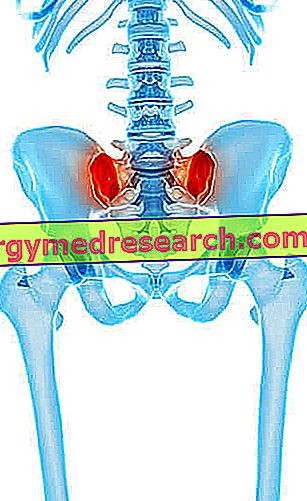By Dr. Stefano Casali
Common elements
The study of these two macro-elements is often associated because:
- Both are found in large quantities in bone tissue;
- They have similar modes of absorption, excretion and regulation of plasma concentration, influenced by vitamin D and parathormone (PTH). The absorption of both is hampered by oxalates and phytates, present in plants, which make them insoluble;
- At least in early childhood it is advisable to ensure a molar ratio Ca / P in the diet of 0.9-1.7 (the two quantities correspond to grams); for an adequate absorption it is advisable to keep this ratio low because the calcium phosphate at intestinal pH is not soluble;
- For both, deficiency and intoxication syndromes are rare, with the exception of premature babies for whom breast milk is too poor for these minerals;
- The calcemia is normally 9-11 mg / dl, phosphorusia (which is actually less controlled, since it also varies by 1 mg, when the calcemia has variations less than 1% during the 24 hours) 2.5-4.5 mg / dl; this 2: 1 ratio is fairly constant, again to avoid insolubility.
Distribution in tissues and functions
Altogether in our organism there are 1200 grams of calcium and 500-600 grams of phosphorus. 99% of calcium and 80% of phosphorus are in the bones, mostly linked together to form hydroxyapatite.
Their function is structural, but these quantities can contribute to maintaining constant plasma levels, thanks to the work of two types of cells, osteoblasts and osteoclasts, which continuously reabsorb and reposition the bone.

This process allows not only to adapt the bone to any new types of load, but also to mobilize these minerals; to get an idea of its size, suffice it to say that the entire skeleton of an adult is renewed in 6.5 years, that of a child in one. Of course, if the osteoblastic process is not exactly equivalent to the osteoclastic one, there are variations. Physiologically the calcium in the bones increases until the second decade of life when, if the conditions have been optimal, there is the peak of bone mass, genetically determined. After the age of 40, with considerable acceleration after menopause, there is a decrease, mainly due to the decrease in estrogen. This phenomenon, if it remains within the physiological limits, is called osteoatrophy. Osteoporosis, on the other hand, according to the WHO definition, is the pathological condition in which the density or bone mineral content is less than more than 2.5 SD compared to the average value of a young adult; it is a multifactorial disease that can also affect young subjects forced to long periods of immobility.
Calcium is present in both interstitial and cell fluids. In the plasma it is present:
- 40% in non-diffusible form, bound to proteins;
- for 50% ionized;
- 10% bound to organic and inorganic acids.
In the intercellular liquid it is present only in ionized form. At these levels it is important as a cofactor in the coagulation and regulation of the permeability of the plasma membrane to Na +, therefore in excitability. Its correct distribution between the two sides of the membranes is essential for the release of histamine, neurotransmitters and hormones and for granulocyte chemotaxis. In the cells it is 90-99% intramitocondrial, thanks to two pumps, one of which, by carrying out a H + countertransport, helps to keep the pH stable (and therefore, also the concentration of sodium, magnesium, phosphate and bicarbonate). In the cytoplasm it maintains the pH also thanks to its reaction, reversible and which releases H + with the phosphate; besides it has a determining role in muscular contraction, it acts as a second and third messenger.
Extraosseous phosphorus is 15% of the total. In the plasma it is 85-90% in the form of mono and bi-valent cations, for the rest it is bound to proteins; contributes to the acid-base balance. In cells it is fundamental in the processes of phosphorylation of enzymes (activation or deactivation), as a component of nucleic acids and high-energy compounds, of membrane phospholipids (70% of total extraosseous phosphorus), of proteins and polysaccharides (eg glycogen ).
Food sources
Both elements are very common in meat, fish, eggs (especially in the yolk), milk and dairy products; to a lesser extent and in a less absorbable form in legumes, vegetables cereals. The relationship between the two is however different because in milk and dairy products calcium prevails, in meat, fish and cereals phosphorus.
Second part "



